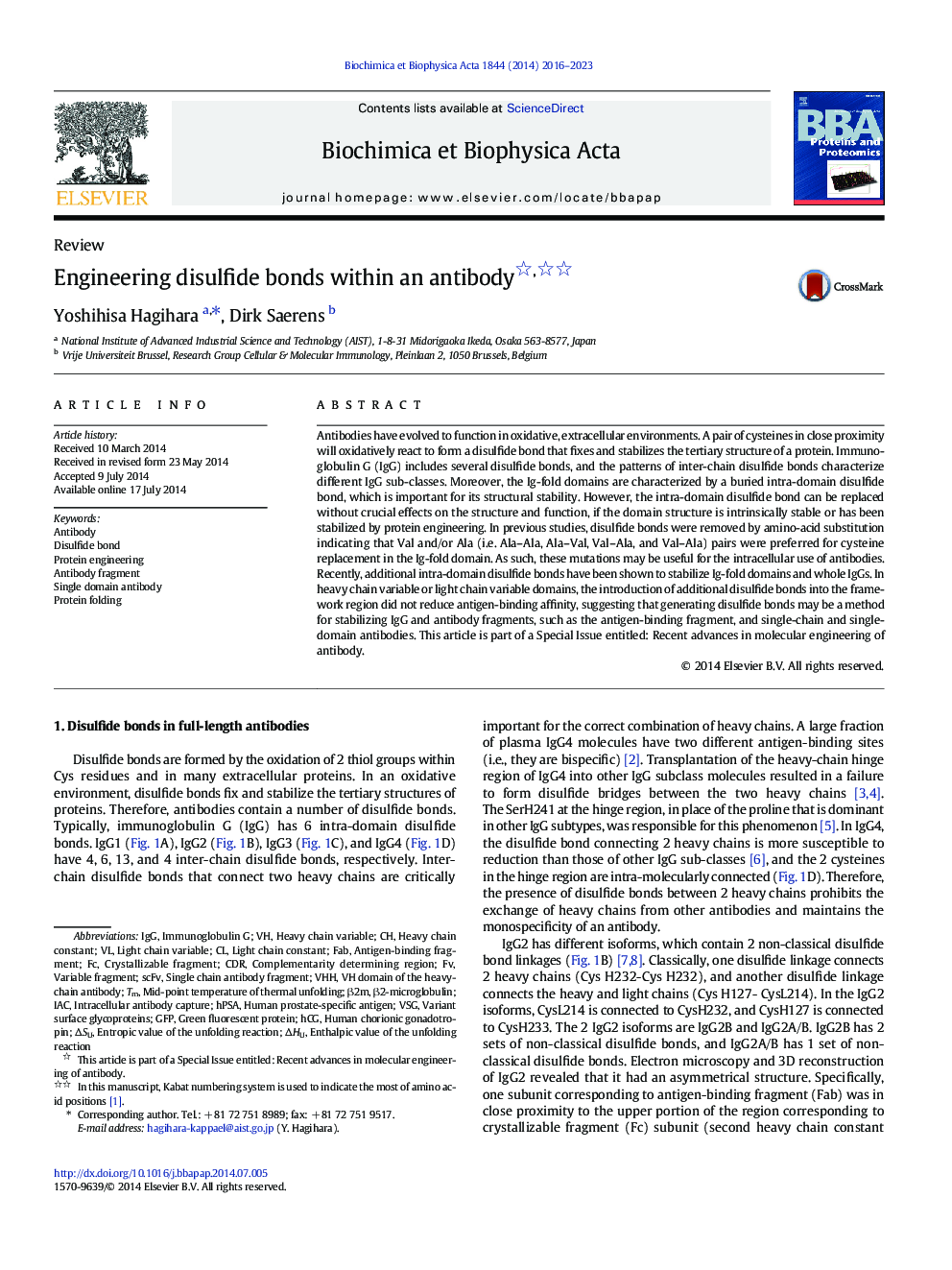| کد مقاله | کد نشریه | سال انتشار | مقاله انگلیسی | نسخه تمام متن |
|---|---|---|---|---|
| 10537204 | 962688 | 2016 | 8 صفحه PDF | دانلود رایگان |
عنوان انگلیسی مقاله ISI
Engineering disulfide bonds within an antibody
ترجمه فارسی عنوان
پیوند های دیسولفید مهندسی در یک آنتی بادی
دانلود مقاله + سفارش ترجمه
دانلود مقاله ISI انگلیسی
رایگان برای ایرانیان
کلمات کلیدی
variant surface glycoproteinsCDRHPSAGFPscFvVSGVHHβ2MIACIgGβ2-microglobulin - β2-میکروگلوبولینSingle domain antibody - آنتی بادی دامنه تنهاHCG - اچ سی جیimmunoglobulin G - ایمونوگلوبولین GProtein folding - تاشدگی پروتئینFab - فابsingle chain antibody fragment - قطعه آنتی بادی تک زنجیره ایAntibody fragment - قطعه آنتیبادیantigen-binding fragment - قطعه اتصال آنتی ژنvariable fragment - قطعه متغیرcrystallizable fragment - قطعه کریستالیزه شدهcomplementarity determining region - منطقه تعریف مکملProtein engineering - مهندسی پروتئینAntibody - پادتَن یا آنتیبادیgreen fluorescent protein - پروتئین فلورسنت سبزDisulfide bond - پیوند دی سولفیدhuman chorionic gonadotropin - گونادوتروپین کوریونی انسان
موضوعات مرتبط
مهندسی و علوم پایه
شیمی
شیمی آنالیزی یا شیمی تجزیه
چکیده انگلیسی
Antibodies have evolved to function in oxidative, extracellular environments. A pair of cysteines in close proximity will oxidatively react to form a disulfide bond that fixes and stabilizes the tertiary structure of a protein. Immunoglobulin G (IgG) includes several disulfide bonds, and the patterns of inter-chain disulfide bonds characterize different IgG sub-classes. Moreover, the Ig-fold domains are characterized by a buried intra-domain disulfide bond, which is important for its structural stability. However, the intra-domain disulfide bond can be replaced without crucial effects on the structure and function, if the domain structure is intrinsically stable or has been stabilized by protein engineering. In previous studies, disulfide bonds were removed by amino-acid substitution indicating that Val and/or Ala (i.e. Ala-Ala, Ala-Val, Val-Ala, and Val-Ala) pairs were preferred for cysteine replacement in the Ig-fold domain. As such, these mutations may be useful for the intracellular use of antibodies. Recently, additional intra-domain disulfide bonds have been shown to stabilize Ig-fold domains and whole IgGs. In heavy chain variable or light chain variable domains, the introduction of additional disulfide bonds into the framework region did not reduce antigen-binding affinity, suggesting that generating disulfide bonds may be a method for stabilizing IgG and antibody fragments, such as the antigen-binding fragment, and single-chain and single-domain antibodies. This article is part of a Special Issue entitled: Recent advances in molecular engineering of antibody.
ناشر
Database: Elsevier - ScienceDirect (ساینس دایرکت)
Journal: Biochimica et Biophysica Acta (BBA) - Proteins and Proteomics - Volume 1844, Issue 11, November 2014, Pages 2016-2023
Journal: Biochimica et Biophysica Acta (BBA) - Proteins and Proteomics - Volume 1844, Issue 11, November 2014, Pages 2016-2023
نویسندگان
Yoshihisa Hagihara, Dirk Saerens,
